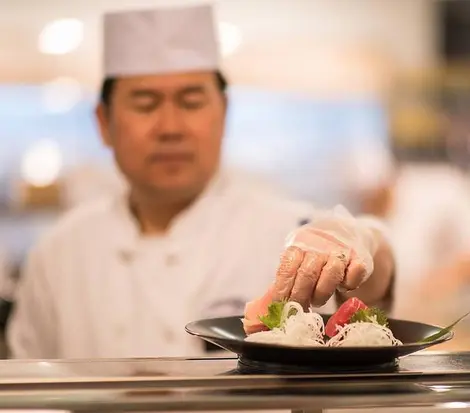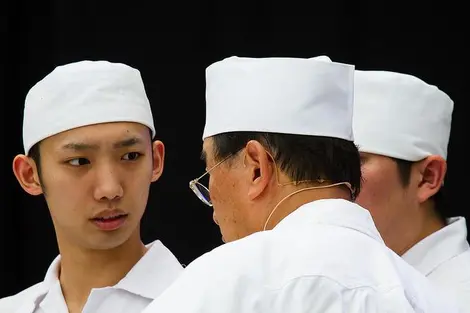The job of sushi chef in Japan 板前
- Published on : 09/02/2018
- by : K.C.
- Youtube
Virtuoses of the knife
Popularized abroad and now the iconic dish of Japan, sushi comes in various forms. But what do you know about the chefs who have mastered making it?
In Japan, a chef who makes sushi is called an itamae. Traditionally, he undertakes an apprenticeship that lasts at least 10 years!
Mastering sushi is more than a craft... it's an art
Unlike 'fast food' sushi made at chain restaurants, real sushi takes a lot of time, dedication and passion. Traditionally, a young chef begins his apprenticeship at the end of high school with a chef himself approved and will complete his course after 10 years! The pupil begins by taking care of the most menial tasks of sushi-making: he does the dishes, the cleaning, the deliveries. In the kitchen, he can observe the master in action and immerse himself in the craft: it's called minarau "learning while watching" or nusumu no gei , "stealing the art" of an accomplished master.
Over the years he rises in rank and when he is allowed to cook rice, it means that he is accepted in the kitchen, because each sushi-ya has its secrets of rice preparation. The choice of produce at the fish market and the preparation of sushi for customers are steps that only occur at the very end of an apprenticeship, and mark the last steps towards the coveted title of master.
Sushi heart and soul
A master cannot only rely on himself: the relationship of trust that he establishes with his suppliers and his kitchen team is crucial, because to make sushi is not only to cook "good food". In all chefs, we find several common principles: dedication, technique, the difficulty of achieving "bare" simplicity, respect for each other's work. The sushi becomes a representation of the work of small hands, a passion for a profession, with know-how passed down from generation to generation. For chef Masa Takayama, "each dish served contains energy". The art is in its simplicity, and that makes it one of the hardest things to achieve. In Japanese, one who makes sushi can also be called shokunin, which means "artisan".
Read : Rice in Japan
Taste and technique
The key to good sushi lies in simple elements: quality local ingredients, their temperature, and the chef's approach to the craft and others. Contrary to many misconceptions, sushi is not just fish. There are many varieties of egg, meat, vegetables, fruit, tofu or natto (fermented soy beans) used, although seafood and fish are the most common.
"Sushi" actually refers to the preparation of rice (sushi-meshi, vinegared rice) and doesn't specifically refer to the other ingredients that are used. Rice is a very important element because it makes up 80 to 90% of the sushi! Its taste, its temperature and its firmness are closely watched. Did you know that the rice must be at room temperature while the other food, called neta, must be fresh?
To read : How to eat sushi



















